African grey parrots can do it all: they make great pets, mimick human speech, and with the right training, can understand hundreds of words and phrases. Some say that the African grey parrot was kept as a pet for thousands of years—there are records of these birds as household pets in biblical times.
This parrot is characterized by its grey feathers and an uncanny talent for accurately mimicking words and phrases. It can also understand human speech, which has helped to catapult this bird to stardom in research circles and the pet trade.
Species Overview
Common Names: Grey parrot, African grey parrot, Congo grey parrot, Congo African grey parrot
Scientific Name: Psittacus erithacus
Adult Size: Measuring about 13 inches, weighing just under 1 pound
Life Expectancy: On average, 40 to 60 years in captivity
Origin and History
The African grey parrot is native to the equatorial regions of Africa, including the nations of Angola, Cameroon, Congo, Ivory Coast, Ghana, Kenya, and Uganda. The species' favored habitat is dense forests, but it is also frequently found at the edges of forests and in open savanna areas.
Temperament
African greys are the most intelligent of the parrot species. Many grow to be extremely sweet and affectionate toward their owners, and the species is known for being quite sociable.
However, an African grey that is bored or neglected is an unhappy bird. A depressed or angry bird will screech its discontent. You must provide the bird with lots of mental stimulation.
A highly intelligent bird is also a complex bird. Although it is very social and demands interaction, it is not necessarily a cuddly bird. Some of these birds tend to become "one-person" birds, even if owners make every effort to socialize them with all members of the family.
Speech and Vocalizations
Pet African greys pick up on words and sounds very quickly. One African grey has even "blown the whistle" on a woman's love affair by repeatedly calling out the other man's name in front of her husband and using the cheating wife's voice.
Like toddler children, African grey parrots have a reputation for repeating everything they hear. So, it's wise to watch your language around these birds. Greys are adept at picking up and repeating any sounds they like, including squeaky doors, vehicle back-up chimes, fire alarms, microwave alert bells, and telephone ringtones. Owners need to be vigilant about what these birds hear—once a sound is learned, it is difficult or impossible for the bird to "unlearn" it.
The African grey is not known as a loud screamer. It can be suitable for owners living in apartments or condos, although neglected birds may scream their dissent for being ignored and can get noisy.
African Grey Parrot Colors and Markings
The African grey, true to its name, sports mostly grey feathers, some with a beautifully thin, pale edging. There are two subspecies, Congo and Timneh greys. Congos are about a third larger than Timnehs. Congo African greys boast shiny black beaks and bright red tail feathers, while Tinmeh greys have horn-colored mandibles and deep maroon tailfeathers.
You can tell males and females apart once the birds reach adolescence, at least 18 months of age. A male African grey's tail will remain solid red, while a female's red tail feathers become tipped with silver. The undersides of a male's wings become dark, while a female's remain light. Other subtle sex differences include: a male will have a more slender, narrower head, while females tend to have longer necks, with larger, rounder heads. If these differences are too subtle for you, you can get a definitive answer with a surgical sexing procedure or a DNA test.
Caring for an African Grey Parrot
The African grey is a medium- to large-sized parrot that needs adequate living space. Minimum cage size should have a 2-foot by 2-foot footprint and 3 feet in height. Larger cages are preferable.
Without plenty of interaction and training, an African grey parrot may become depressed and exhibit self-mutilating behaviors, such as feather-plucking.
These birds thrive when they have lots of opportunities for playing with toys, interacting with their owners, and learning words and tricks. Expect to spend several hours each day interacting with and training your African grey. Many owners report that African greys enjoy having television or radio playing when they are left alone.
African greys are said to be somewhat sensitive and easily affected by stress and commotion. They may be more relaxed if the cage is placed in a quiet corner of the room rather than in the center.
Common Health Problems
African greys can be prone to feather picking, calcium deficiency, vitamin-A and vitamin-D deficiency, respiratory infection, psittacosis, and psittacine beak and feather disease.
Vitamin deficiencies can be prevented by making sure your bird eats a wide selection of fruits, as well as vegetables high in beta-carotene, such as cooked sweet potato, and fresh kale.
Feather-picking is usually the sign of a bored bird that is not receiving enough mental stimulation, attention, or exercise.
Diet and Nutrition
In the wild, African greys eat fruits, leaves, insects, bark, and flowers. The best food for an African grey in captivity is a high-quality, formulated pellet supplemented with fruits such as pomegranate, organic mango, and melon. Also, provide fresh vegetables, including leafy greens like arugula, watercress, kale, sprouts, and healthy seeds such as hemp and flaxseed. You can premake chop, a salad for birds, that will help keep your African grey parrot healthy and thriving.
Many greys also enjoy a variety of treats and snacks, such as nuts and healthy table foods like steamed green beans, breakfast toast, and salad.
Offer you bird a half cup of pellet-based parrot mix and a 1/4 cup of fruits and vegetables daily and adjust the quantity according to their appetite. Remove and discard all uneaten fresh food by the end of each day.
Exercise
Adequate amounts of activity are crucial to maintaining the health of an African grey parrot. Pet greys should be allowed to spend at least 1 to 2 hours out of their cages daily with vigorous exercise and make sure to provide them with plenty of bird-safe chew toys to help exercise their powerful beaks.
Social, friendly, although do not like being cuddled
Intelligent, can speak and understand hundreds of words and phrases
Requires a lot of attention and mental stimulation
Tend to be one-person birds not the greatest family pet
Where to Adopt or Buy an African Grey Parrot
Contact a local breeder and see if you can meet with them and their pets to see first-hand how these birds interact in a home environment.
Breeders sell African greys in the range of $2,000 to $4,000. Signs you should avoid the breeder include cramped living conditions, inactive birds, and breeders who avoid your questions or do not seem to have much information on their birds. Rescues, adoption organizations, and breeders where you can find African grey parrots include:
- Beauty of Birds List of Breeders
- Lonely Grey Rescue
- Bird Breeders
More Pet Bird Species and Further Research
If the African grey parrot interests you, you may want to also consider one of these other pet bird species:
- Cockatoo Species Profile
- Sun Conure Species Profile
- Quaker Parrot Species Profile
Otherwise, check out all of our other medium-sized parrot species profiles.
Related Article
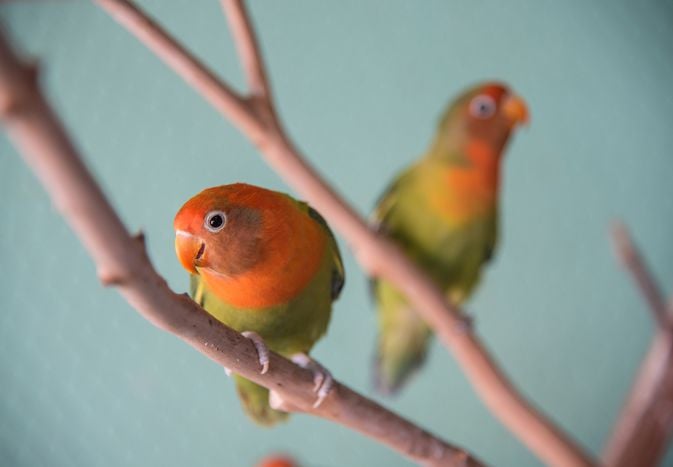
Lovebird (Pocket Parrot) Species Profile
Lovebirds are a favorite among pet birds, often called "pocket parrots," and are among the most col
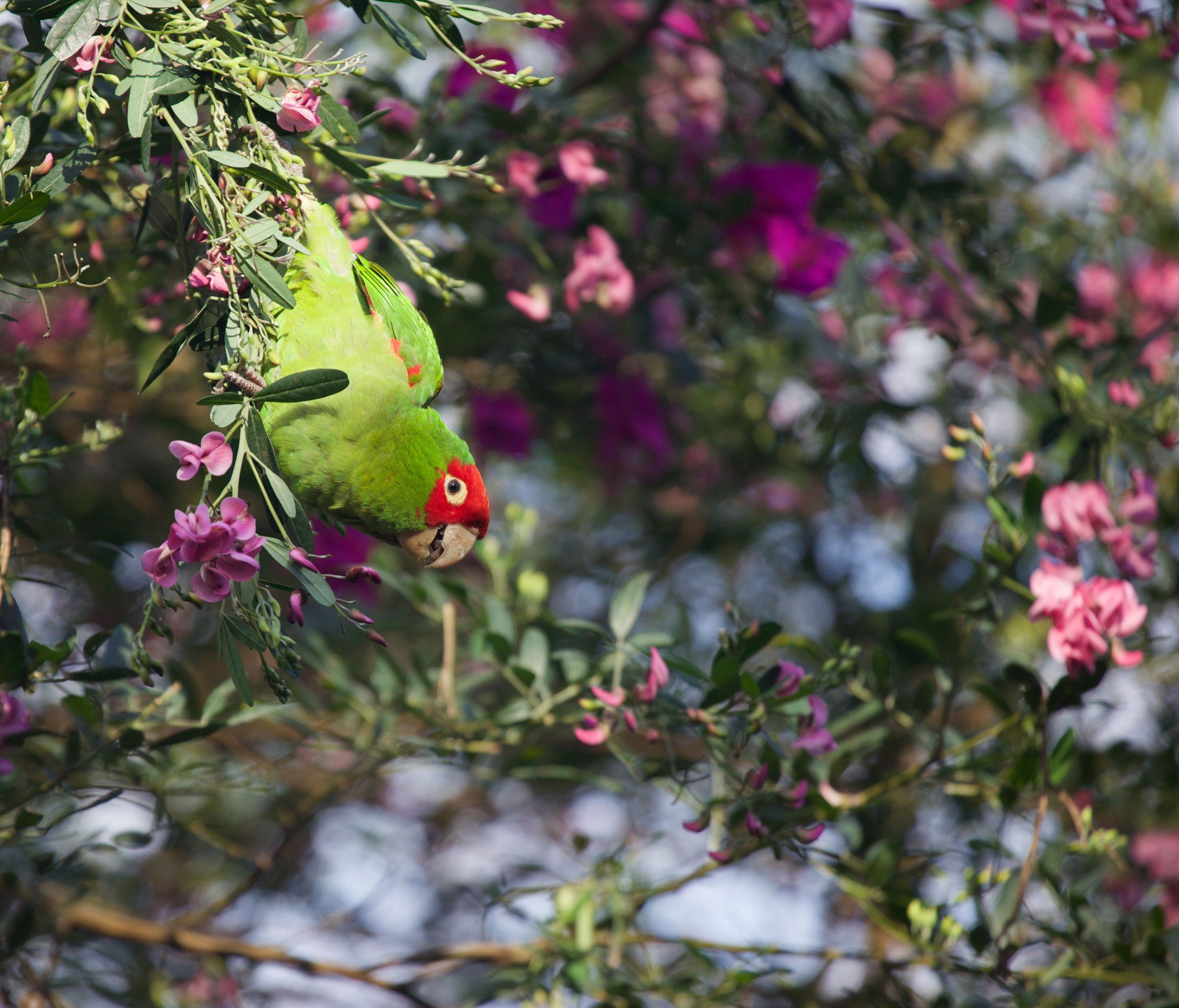
Cherry-Headed (Red-Masked) Conure: Bird Species Profile
The cherry-headed conure, also known as the red-masked conure, is a medium-sized parrot that is ver
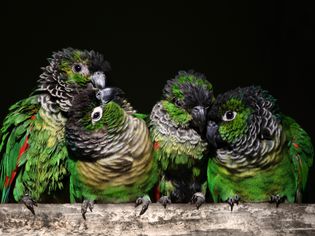
Black-Capped Conure (Rock Parakeet): Bird Species Profile
The black-capped conure is one of the smallest of the conure parrots, as well as one of the most di

Half-Moon Conure Species Profile
The Half-moon conure is a medium-sized dwarf parrots species that is known for its excitable person
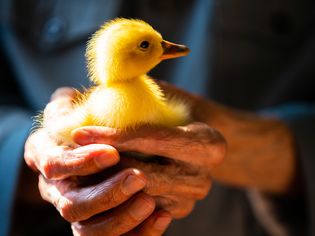
Everything You Need to Know About Keeping a Duck as a Pet
Chickens are popular backyard pets but ducks have many of the same characteristics. This has led to
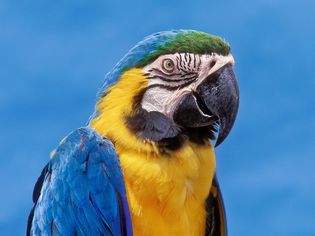
Blue and Gold Macaw: Bird Species Profile
Beautiful, captivating, intelligent, and majestic, blue and gold macaws are one of the most po

11 Top Amazon Parrot Species to Keep as Pets
Amazon parrots are intelligent, friendly, affectionate, and sociable birds with many striking wild

9 Top Blue Parrot Species to Keep as Pets
Although green is a dominant color in many parrots, you still can find several pet birds with beaut
About WhiskerClub
We are a premier digital platform committed to delivering high-quality content to our readers. Our mission is to provide accurate, reliable, and engaging information that adds value to our audience's daily lives.
Our team consists of experienced content creators and subject matter experts who uphold the highest standards of professionalism. In an era of information overload, we curate content with care, ensuring our users receive only the most relevant and trustworthy information.
Beyond just reporting facts, we focus on depth and context. Through expert analysis, comprehensive research, and clear presentation, we help our audience gain meaningful insights and make informed decisions.
We take pride in being a trusted information source for our growing community of readers. Our user-first approach means we continuously adapt to provide content that meets our audience's evolving needs and interests.
Innovation and excellence drive everything we do. We're committed to improving our platform and services to deliver the best possible experience for our users.

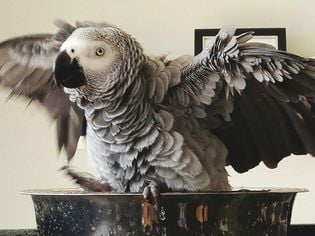
Comments on " African Grey Parrot: Species Characteristics & Care" :